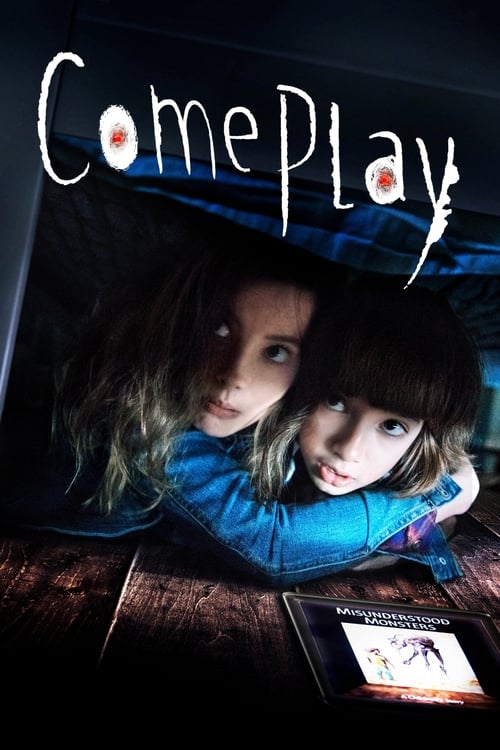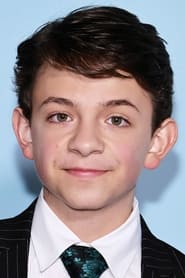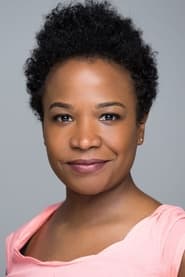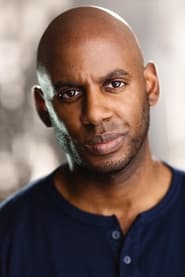Cast
View AllGillian Jacobs
as Sarah
John Gallagher Jr.
as Marty
Azhy Robertson
as Oliver
Winslow Fegley
as Byron
Jayden Marine
as Mateo
Gavin MacIver-Wright
as Zach
Dalmar Abuzeid
as Mr. Calarco
Eboni Booth
as Dr. Robyn
Rachel Wilson
as Jennifer
Alana-Ashley Marques
as Aide
Ish Morris
as Mateo's Dad
Ana Araújo
as Kid Next to Byron
Alex Spencer
as Police Officer
Kate Fenton
as Rude Shopper
Crew
Director
- Jacob Chase
Writer
- Jacob Chase
Producer
- Alex Heineman
- Andrew Rona
Reviews
Manuel São Bento
If you enjoy reading my Spoiler-Free reviews, please follow my blog @
https://www.msbreviews.com
2020 is undoubtedly one of the worst years ever for movies, not even in terms of quality, but the infinite delays of highly anticipated films automatically make this year more underwhelming than what it would ever be. Nevertheless, it still delivered a few surprises along the way. Movies that I wasn't really expecting to like as much as I did (Underwater, The Call of the Wild), or even films that I knew I'd enjoy them but eventually end up absolutely loving them (The One and Only Ivan, Palm Springs, The Personal History of David Copperfield). Jacob Chase's feature directorial debut is amongst the former group. I only knew the premise and the cast, which I have to admit didn't really convince me, but I still gave it a go since this could be my last trip to a film theater this year…
If it ends up truly being my last time watching a movie on the big screen this year, then it's a wonderful final film. Come Play is one of the biggest surprises of 2020. There are so many aspects that I absolutely love about it, but it doesn't escape from several issues as well. I'll start with the impressive performance of Azhy Robertson (Oliver) as a non-verbal autistic kid. As someone who has shared some time with a young autistic girl, I left the theater fully believing that Azhy was, in fact, autistic in real-life (I didn't recognize him from Marriage Story). I was mind-blown when I found out he wasn't. His display feels so realistic and authentic that I never thought his portrayal was pure acting.
John Gallagher Jr. (Marty) is really good as well, but he doesn't have as much screentime as Gillian Jacobs (Sarah). The latter isn't exactly awful, but she definitely disappoints in the more sentimental moments. She's great during the horror sequences, adding to the suspenseful atmosphere, but when the time comes to really deliver heartfelt dialogues and passionate expressions, Gillian fails to offer a convincing performance. The other kids in the movie are also quite cringe-worthy, but not every young actor can be incredible at such a young age.
Despite the cast's irregular interpretations, none ruins the captivating story behind Larry, the "misunderstood monster" on the other side of the screen. The social commentary is loud and clear, giving the film a whole other layer. Jacob Chase's commitment and dedication to this work (based on his own short) are palpable throughout the runtime, visible through the numerous tiny details spread across each storyline. I found myself astonishingly invested in the narrative. However, Chase often repeats scenes meant to pass that social message he so desperately wants to transmit, transforming many scenes that could be genuine into something extremely forced.
This last aspect is compensated with innovative horror sequences with highly creative use of today's technology to generate an incredibly tense environment. There aren't many jumpscares, but most are pretty effective. Nevertheless, it's the suspenseful atmosphere throughout the entire movie that elevates the overall horror vibe. Chase also employs long takes, which ultimately leaves viewers at the edge of their seats due to some excellent camera work (Maxime Alexandre) and seamless editing (Gregory Plotkin). I really like the score (Roque Baños), but there are a couple of moments where the almost silent music weirdly becomes an adventure tune.
Another brilliant technical decision comes from Chase's work with the VFX team. As expected from a low-budget production, the visual effects would never reach today's standards if they decided to show the monster in plain sight during daylight. If you go into the film expecting a monster movie where the latter is the protagonist, forget it. The crew was intelligent and humble enough to acknowledge the not-that-good VFX quality, so Chase "hides" the monster with low lighting and "shows" him during night sequences and/or through a smartphone/tablet's camera. It might be a disappointing aspect for many people, but I was delighted with this smart decision.
It's more of a family drama than a generic horror flick. There's a fair attempt at delivering something special, and I do believe it was very close to being one of the best films of the year. The treatment of the autistic character is near-perfect. I love the fact that not only the movie shows every problem that a condition like this brings, but it also demonstrates the extraordinary qualities that autistic people possess. Even though he cannot speak, Oliver is exceptionally clever, fun, and brave, something I believe most of today's society doesn't think autistic kids can be. The ending is both bold and surprising, finishing on a significant emotional moment that will leave viewers with a bittersweet reaction.
In the end, Come Play is one of my favorite surprises of this year. Jacob Chase proves that he's a dedicated filmmaker who knows his craft. With exceptional preparation, Chase presents an extremely captivating narrative, distinct from the generic horror flicks that flood every year. By focusing on the emotionally compelling story instead of the formulaic jumpscares, the horror sequences have a much more significant impact due to the viewer's connection with the main characters, especially Azhy Robertson's. The latter delivers one of the best young performances of 2020, interpreting an autistic kid with remarkable authenticity. However, the rest of the cast is not up to the task, especially Gillian Jacobs, who disappoints with an overall emotionally underwhelming display. The social commentary is important and efficiently transmitted, despite Chase eventually losing his balance and exaggerating the number of scenes that ultimately become forced. Technically, the suspenseful atmosphere steals the spotlight from the few yet effective jumpscares. Ends with a surprisingly bold, emotionally bittersweet moment. As long as you don't expect a "monster flick" packed with predictable scares, I sincerely recommend it to anyone looking for a Halloween plan.
Rating: B+
Nov 1, 2020
Repo Jack
While the movie is definitely derivative (i.e. "The Babadook" on a phone), the acting is above average, the creature effects are not bad, and there are a few cleverly done creepy scenes using the device's camera.
I'm not sure why they made Oliver an autistic pre-teen, but actor Azhy Robertson makes it believable. And is it just me, or is anybody else sick and tired of "school yard bullies harassing the child lead" trope?!?
In the film's climax, there is a scene that took my by surprise in a good way (I've seen it all so I give any film kudos if it can pull that off). That actually had me take another look at the movie and I liked it more.
Nov 22, 2020
JPV852
Some okay moments amongst some silly ones (I'll never find something come out of a phone all that scary). But the performances were earnest and admittedly I was relatively entertained. Reminded me a little of David F. Sandberg's Lights Out in some ways, which like this probably better served as a segment on Tales from the Crypt or something. **3.0/5**
Feb 7, 2021
Thematic Analysis
This Horror/Mystery film explores themes of fear and survival, delving into the psychological aspects of human nature when confronted with the unknown. Come Play presents a unique perspective on the horror genre by focusing on the psychological terror rather than relying on typical jump scares.
Director Jacob Chase brings their distinctive visual style to this film, continuing their exploration of themes seen in their previous works while adding new elements. Their approach to pacing and visual storytelling creates a viewing experience that rewards close attention.
Released in 2020, the film exists within a cultural context that continues to evolve with our understanding of its themes. Its reception demonstrates the diverse reactions to its artistic choices and its place in cinema history.
Did You Know?
- The production of Come Play took approximately 26 months from pre-production to final cut.
- With a budget of $9.0 million, the film proved to be a financial success, earning back its investment and more.
- The final cut of the film runs for 96 minutes, though the director's initial assembly was reportedly 147 minutes long.
- The musical score contains over 53 unique compositions.
- The cast underwent specialized training for 3 weeks before filming began.
- The film contains approximately 1941 individual shots.
Historical Context
- In 2020, when this film is released:
- Streaming platforms had largely replaced traditional cinema and television models.
- The COVID-19 pandemic transformed global health, economics, and social interaction.
- Streaming platforms were disrupting traditional distribution models and changing how audiences consumed films.
How This Film Stands Out
While Come Play shares thematic elements with other films in its genre, it distinguishes itself through its unique approach to storytelling, visual style, and character development.
Unlike Gremlin, which focuses more on action than character development, Come Play subverts genre expectations by exploring its themes with greater nuance.
While films like Hellraiser: Hellseeker and Freddy's Dead: The Final Nightmare explore similar territory, Come Play stands apart through its distinctive directorial vision and pacing.
This film's unique contribution to cinema lies in its bold artistic choices and willingness to challenge viewer expectations, making it a valuable addition to its genre.
Details
- Release Date: October 28, 2020
- Runtime: 1h 36m
- Budget: $9,000,000
- Revenue: $13,182,254
Where to Watch




















